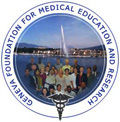External orthosis as exclusive treatment for hangman's fracture type II. Case report
Keywords:
hangman's fracture, traumatic spondylolisthesis of the axis, conservative treatmentAbstract
Introduction: Fractures of the axis are the most common injuries to the upper cervical spine. Traumatic spondylolisthesis is a bilateral fracture of the pars interarticularis of C2. Its management is controversial.
Case report: A 58-years-old male patient was brought to the emergency department due to a height falling. During the initial evaluation, neurological deficit was not found, but the patient refered pain when moving his neck in a rotational direction. A Minerva rigid cervical orthosis was immediately placed on him and cervical x-rays was taken, which showed traumatic spondylolisthesis of the axis grade II. Initially was offered surgical treatment but the patient refused. In this case, a rigid cervical immobilization scheme was used for at least 16 weeks. During the follow-up period, serial x-rays showed fusion of C2-3. The patient was asymptomatic throughout this period, but with discomfort due to immobilization. The external orthosis was used until week 20th. Ten months after treatment the patient's functional performance was similar to that before the accident, with no signs of pseudoarthrosis.
Conclusions: Conservative management of this patient with traumatic spondylolisthesis of the axis type II with external orthosis had favorable results.
Downloads
References
1. Mahmoud A, Shanmuganathan K, Montgomery A. Surgical Management of Hangman’s Fracture: A Systematic Review. Int J Spine Surg [Internet]. junio de 2023 [citado 5 de junio de 2024];17(3):454-67. Disponible en: http://ijssurgery.com/lookup/doi/10.14444/8445
2. LeFever D, Whipple SG, Munakomi S, Menger RP. Hangman’s Fractures. En: StatPearls [Internet]. Treasure Island (FL): StatPearls Publishing; 2024 [citado 5 de junio de 2024]. Disponible en: http://www.ncbi.nlm.nih.gov/books/NBK519496/
3. Salottolo K, Betancourt A, Banton KL, Acuna D, Panchal R, Bar-Or D, et al. Epidemiology of C2 fractures and determinants of surgical management: analysis of a national registry. Trauma Surg Acute Care Open. 2023;8(1):e001094. DOI: 10.1136/tsaco-2023-001094
4. Effendi B, Roy D, Cornish B, Dussault RG, Laurin CA. Fractures of the ring of the axis. A classification based on the analysis of 131 cases. J Bone Joint Surg Br. 1981;63-B(3):319-27. DOI: 10.1302/0301-620X.63B3.7263741
5. Levine AM, Edwards CC. The management of traumatic spondylolisthesis of the axis. J Bone Joint Surg Am. febrero de 1985 [citado 5 de junio de 2024];67(2):217-26. Disponible en: https://pubmed.ncbi.nlm.nih.gov/3968113/
6. Lee S, Hur JW, Oh Y, An S, Yun GY, Ahn JM. Current Concepts in the Treatment of Traumatic C2 Vertebral Fracture : A Literature Review. J Korean Neurosurg Soc [Internet]. enero de 2024 [citado 5 de junio de 2024];67(1):6-13. Disponible en: https://www.ncbi.nlm.nih.gov/pmc/articles/PMC10788552/
7. Tamayo EEH, Gonzalez LCA, Saname DAM, Leyva FS. Fusión cervical anterior C2-C3 para espondilolistesis traumática del axis grado III. Rev Cuba Ortop Traumatol. 2020 [citado 5 de junio de 2024];34(1):1-
9. Disponible en: https://www.medigraphic.com/cgi-bin/new/resumen.cgi?IDARTICULO=97442
8. Hayman E, Oskouian RJ, Chapman JR. Chapter 9 - Upper cervical spine and spinal cord injuries. En: Fehlings MG, Kwon BK, Vaccaro AR, Oner FC, editores. Neural Repair and Regeneration After Spinal Cord Injury and Spine Trauma [Internet]. Academic Press; 2022 [citado 5 de junio de 2024]. p. 149-66. Disponible en: https://www.sciencedirect.com/science/article/pii/B9780128198353000034
9. Alves OL, Pereira L, Kim SH, Grin A, Shimokawa N, Konovalov N, et al. Upper Cervical Spine Trauma: WFNS Spine Committee Recommendations. Neurospine [Internet]. diciembre de 2020 [citado 5 de junio de 2024];17(4):723-36. Disponible en: https://www.ncbi.nlm.nih.gov/pmc/articles/PMC7788417/
10. Sarath Chander V, Govindasamy R, Rudrappa S, Gopal S. Unstable Hangman Fracture Complicated by Vertebral-Venous Fistula: Surgical Considerations and Review of Literature. World Neurosurg. enero de 2021 [citado 5 de junio de 2024];145:409-15. DOI: 10.1016/j.wneu.2020.09.109
11. Turtle J, Kantor A, Spina NT, France JC, Lawrence BD. Hangman’s Fracture. Clin Spine Surg. noviembre de 2020;33(9):345-54. DOI: 10.1097/BSD.0000000000001093
12. Hanjiang R, Genyang J, Xinwu L, Jian Y, Peng W, Yin Z, et al. Biomechanical properties of three types of posterior single-segment fixation for type II Hangman’s fracture. Chin J Tissue Eng Res [Internet]. 28 de mayo de 2021 [citado 6 de junio de 2024];25(15):2309. Disponible en: https://www.cjter.com/EN/10.3969/j.issn.2095-4344.3812
13. Duggal N, Chamberlain RH, Perez-Garza LE, Espinoza-Larios A, Sonntag VKH, Crawford NR. Hangman’s fracture: a biomechanical comparison of stabilization techniques. Spine. 15 de enero de 2007;32(2):182-7. DOI: 10.1097/01.brs.0000251917.83529.0b
14. Goel A, Hawaldar A, Shah A, Bhambere S, Lunawat A, Singh M, et al. Hangman’s fracture: a clinical review based on surgical treatment of 15 cases. Neurosurg Rev. febrero de 2022;45(1):595-606. DOI: 10.1007/s10143-021-01556-8
Downloads
Published
How to Cite
Issue
Section
License
Authors who have publications with this journal agree to the following terms:
- Authors will retain their copyright and assign to the journal the right of first publication of their work, which will simultaneously be subject to a Creative Commons License / Attribution-Noncommercial 4.0 International (CC BY-NC 4.0) that allows third parties to share the work as long as its author and first publication in this journal are indicated.
- Authors may adopt other non-exclusive license agreements for distribution of the published version of the work (e.g., depositing it in an institutional repository or publishing it in a monographic volume) as long as the initial publication in this journal is indicated.
- Authors are allowed and encouraged to disseminate their work through the Internet (e.g., in institutional telematic archives or on their web page) before and during the submission process, which can produce interesting exchanges and increase citations of the published work. (See The effect of open access).





 november 15 2025
november 15 2025


